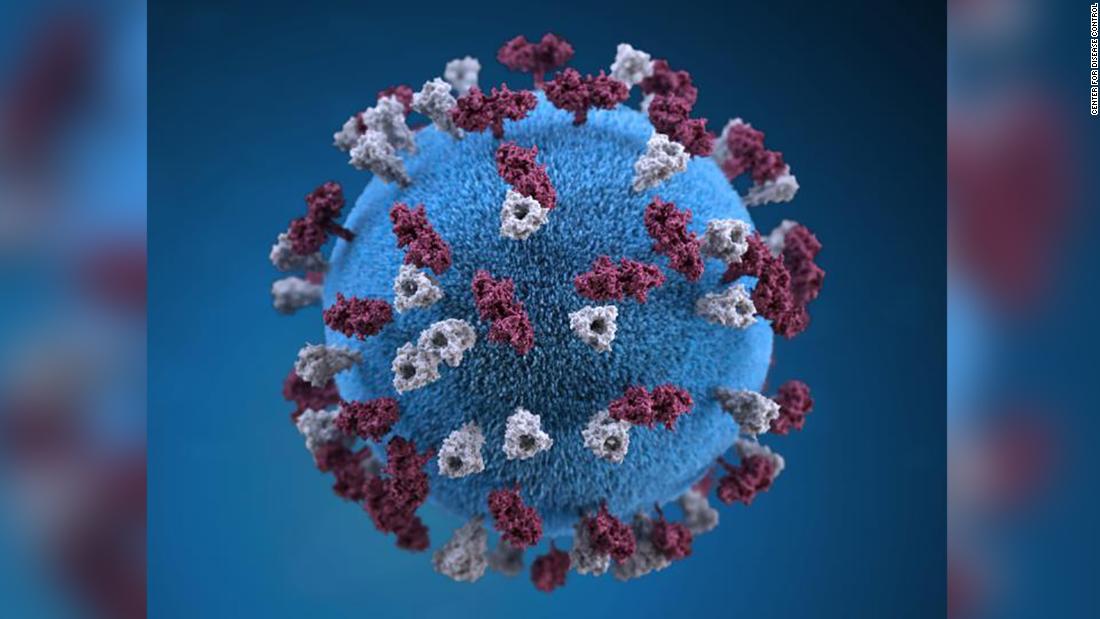Overall, there have been 681 cases of measles in 22 states this year, according to CNN analysis of data from state and local health departments.
States reporting measles cases are: Arizona, California, Colorado, Connecticut, Florida, Georgia, Illinois, Indiana, Iowa, Kentucky, Maryland, Massachusetts, Michigan, Missouri, Nevada, New Hampshire, New Jersey, New York Oregon, Tennessee, Texas. and Washington.
As of Monday, US Centers for Disease Control and Prevention reported 626 confirmed individual cases of measles in these 22 states. This includes illnesses reported by state health departments at the CDC until April 19 and therefore does not include cases reported since.
The agency updates the number of measles cases each Monday.
Previously, the highest number of cases reported since elimination was 667 in 2014.
"Most of the cases we see are occurring in unvaccinated communities"
Measles is a highly contagious disease caused by a virus that can spread in the air when an infected person coughs or sneezes or when someone comes into direct contact or shares germs by touching the same objects or surfaces. Symptoms of measles can include fever, cough, runny nose, watery eyes and a rash of red pimples.
According to public health officials, most of the cases in the United States have appeared in communities where the vaccination rate against the virus is low.
"I think that parents' concerns about vaccines lead to under-vaccination and that most of the cases we observe are in unvaccinated communities," said Dr. Nancy Messonnier, director of the National Immunization Center and CDC respiratory diseases, in February at a congressional hearing on measles outbreaks.
In the United States, vaccination coverage against measles is high. According to the CDC, 91.5% of American children aged 19 to 35 months received at least one dose of the measles, mumps and rubella vaccine in 2017, the most recent year available.
"However, there are pockets of people who are reluctant to get vaccinated," said Messonnier.
"Measles outbreaks occur when measles enters these communities of unvaccinated people," she said. "The only way to protect yourself against measles is to get vaccinated."
A source familiar with the measles situation in the United States had previously told CNN that of the 626 measles cases identified by federal officials last week, 72% had not been vaccinated and 18% had unknown vaccination status. . Among those who are not vaccinated, this may be due to their personal beliefs and medical reasons. The remaining 10% were vaccinated with one or two doses.
Of these 626 cases, 487 were persons aged 19 and under.
The CDC noted that these outbreaks were linked to travelers who had been infected and had brought measles back from other countries, including Israel, the Ukraine and the Philippines.
For example, the outbreak in New York, declared a public health emergency last month, began when an unvaccinated child was infected while traveling to Israel, according to health officials. health.
A person from New York who was unconsciously infectious with measles then went to southeastern Michigan, passing the disease on to at least 38 people, said Lynn Sutfin, the ministry's information officer. Health and Social Services of Michigan.
The history of measles in America
In 1912, measles became a notifiable disease in the United States, meaning that health care providers and laboratories must report diagnosed cases. During the first decade of reporting, approximately 6,000 measles deaths were reported each year.
In the 1950s, researchers isolated the measles virus in a patient's blood and in the 1960s they were able to turn this virus into a vaccine. The vaccine has been licensed and used as part of a vaccination program.
Before the introduction of the measles vaccination program in the United States in 1963, an estimated 3 to 4 million people contract the disease each year in the country, according to the CDC. Thereafter, cases and deaths from measles in the United States and other developed countries fell. In the United States, 963 cases were reported in 1994 and 508 in 1996.
In 2000, when there were only 86 cases, measles was declared eliminated from the United States, which means that there was no continuous transmission of the disease for more than 12 months.
Since 2000, the annual number of measles cases reported has ranged from 37 in 2004 to 667 in 2014.
The measles, mumps and rubella vaccine, called the MMR vaccine, is very effective. A dose is about 93% effective in preventing measles if you come in contact with the virus. Two doses are effective at about 97%.
Experts recommend that children receive the vaccine in two doses: the first between 12 and 15 months and the second between 4 and 6 years.
Regardless of the drug, including vaccines, there is a risk of reactions, according to the CDC. These are usually benign and go away on their own, but there is a "distant possibility" of side effects and even serious injury.
Experts say the benefits outweigh the risks associated with measles vaccine.
